This Giblin made radio was a barn find and is in pretty rough shape.
The consensus is that it was once a battery set that was converted to AC at some point.
tubes and 3 201 tubes.

Click to enlarge
Sunday Providence Journal, September 6th, 1922
Courtesy Ned Connors
|

Pawtucket Times
October 21, 1922
|
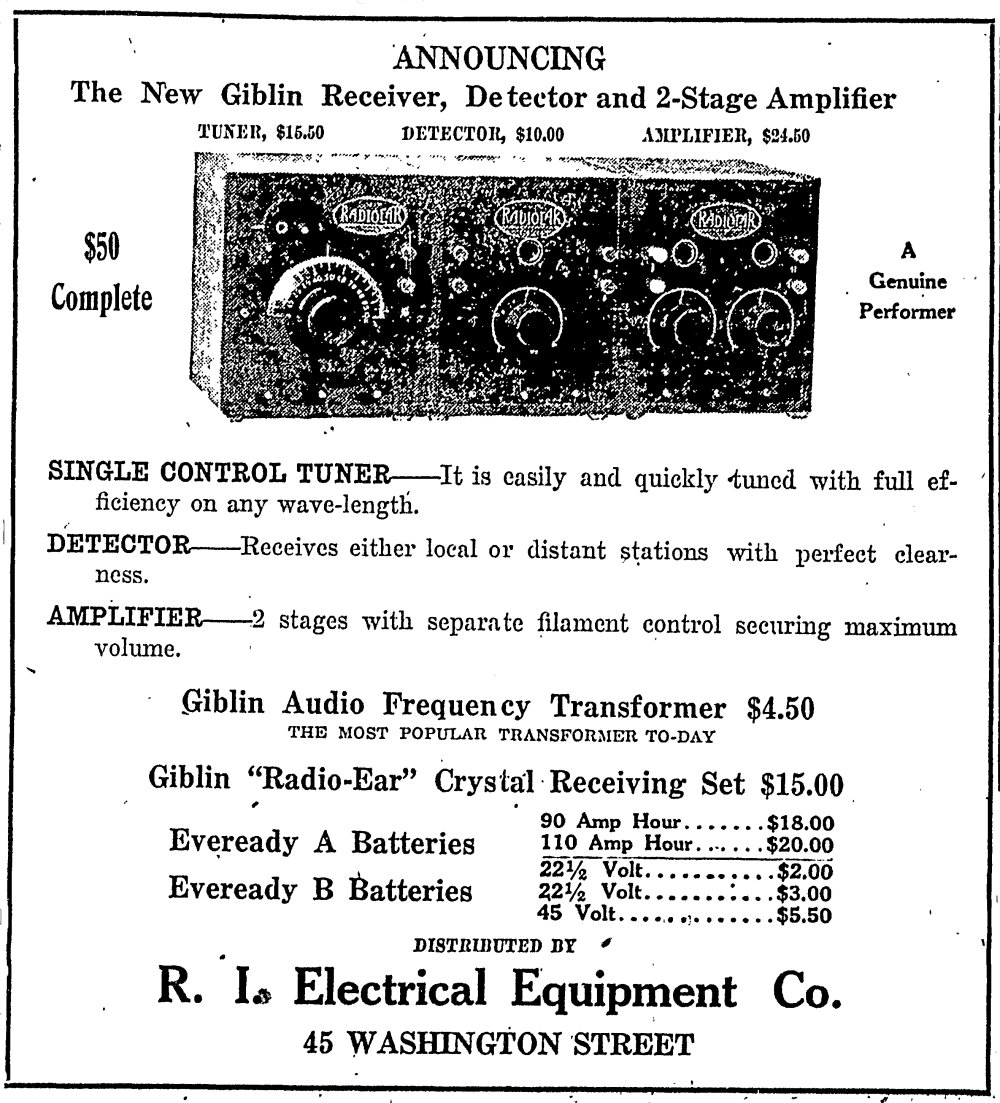
Click to enlarge
Providence, Journal
October 29, 1922
|

Click to enlarge
Providence, Journal
November 5, 1922
|
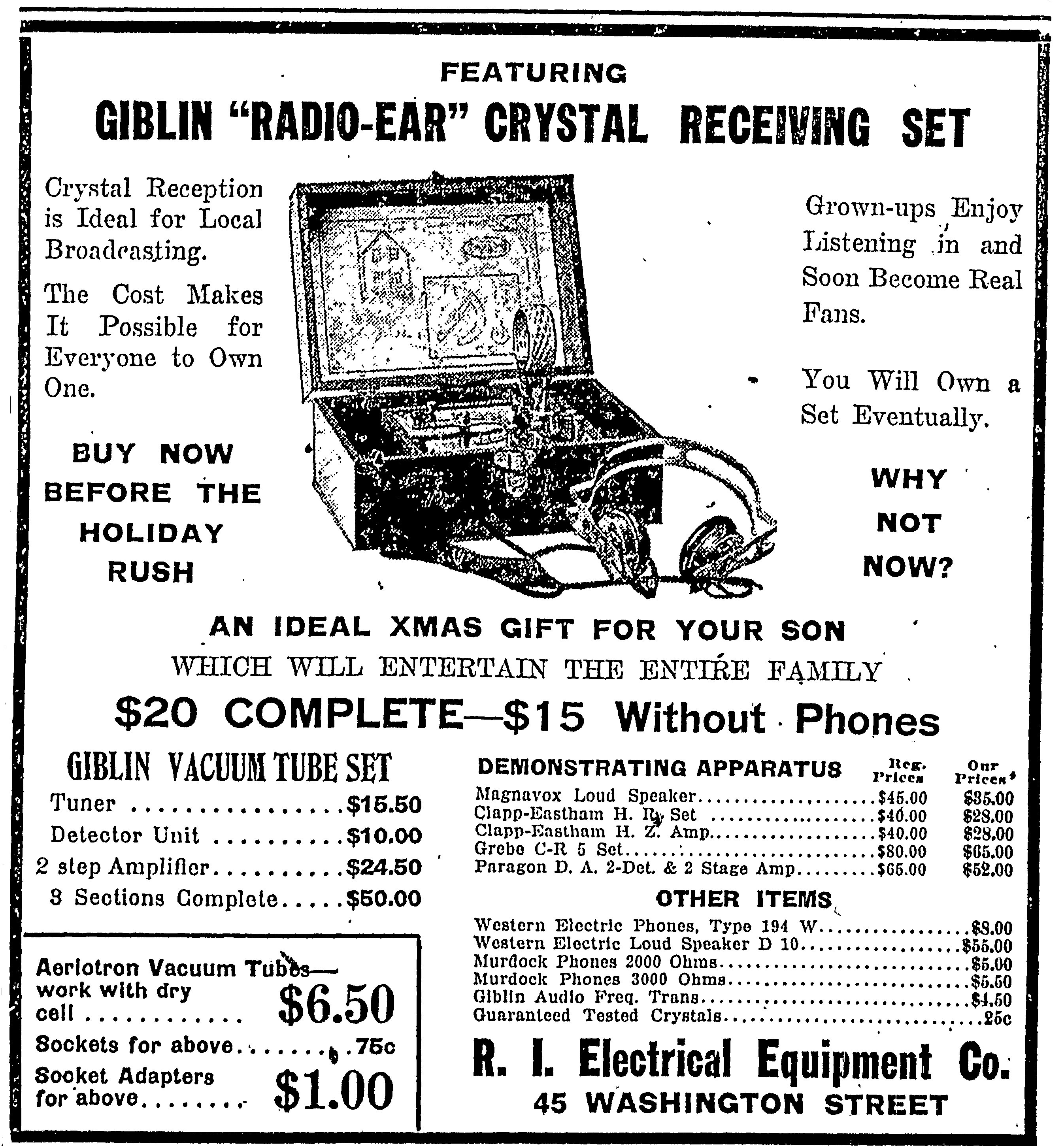
Click to enlarge
Providence, Journal
November 26, 1922
|
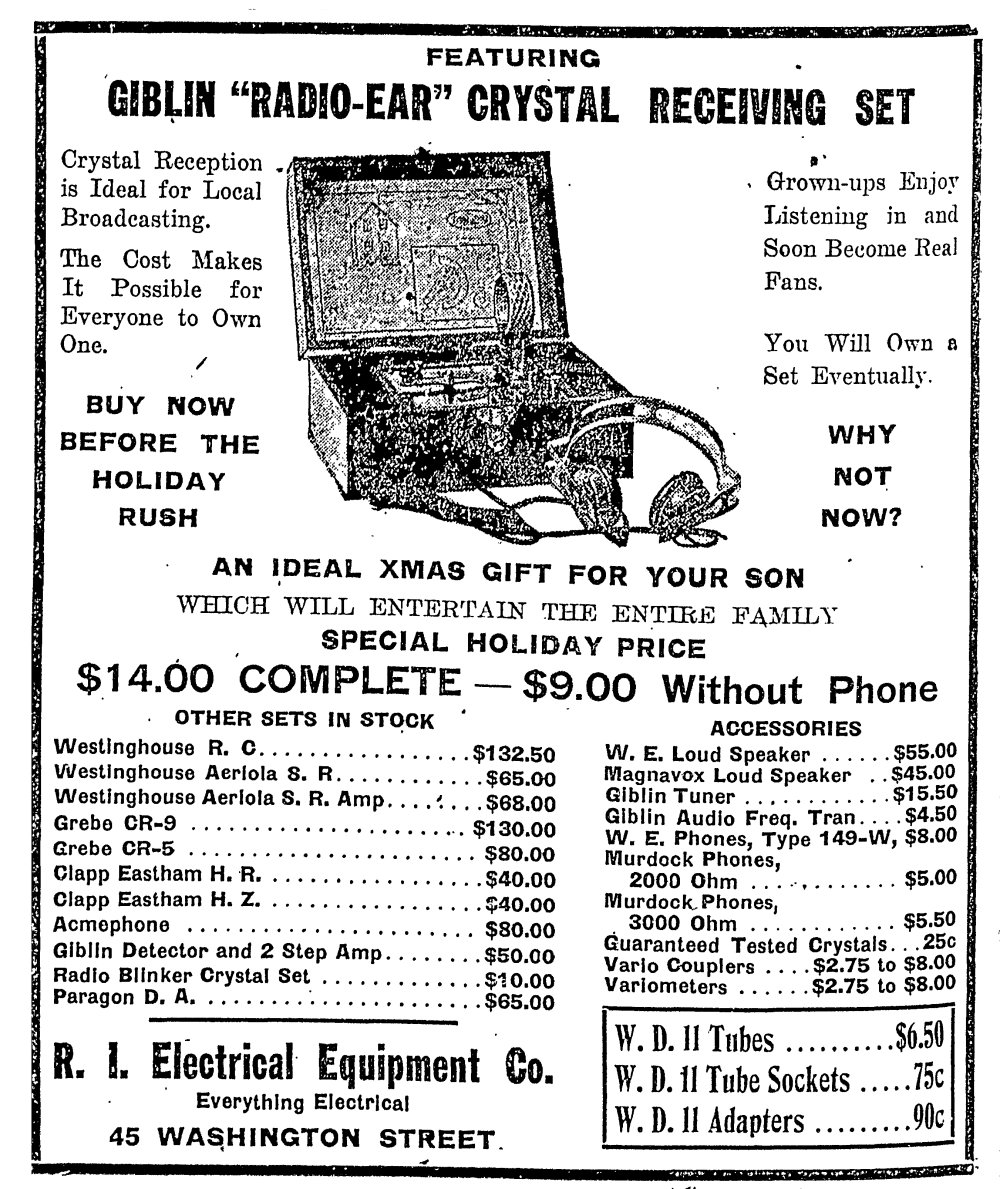
Click to enlarge
Providence, Journal
December 24, 1922
|

Click to enlarge
Providence, Journal
December 9, 1923
|

Click to enlarge
Providence Journal January 2, 1924
|
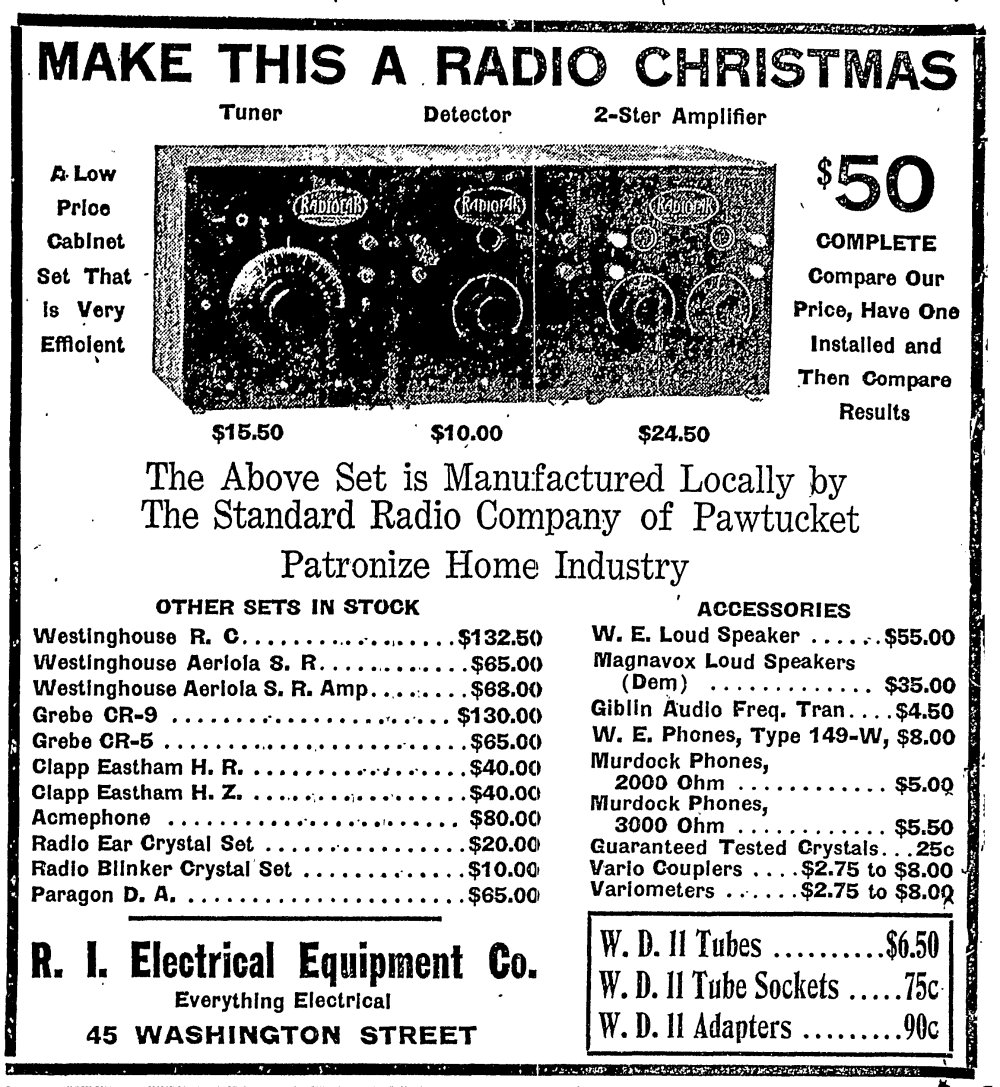
Click to enlarge
Providence, Journal
December 24, 1922
|

Click to enlarge
Providence, Journal
March 29, 1925
|
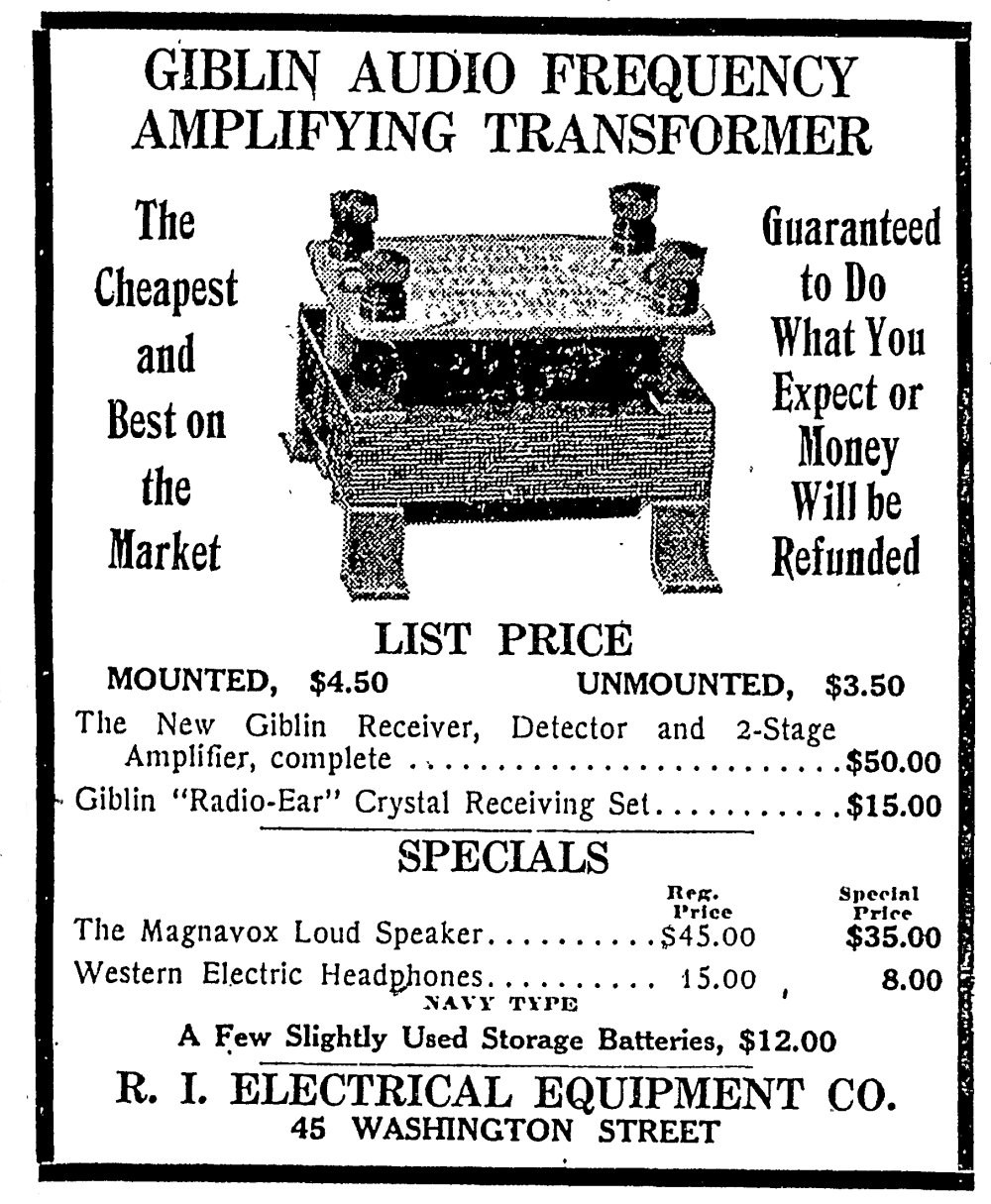
Click to enlarge
Providence, Journal
November 5, 1922
|

Click to enlarge
Providence, Journal
September 3, 1922
|

Click to enlarge
THE SUN RADIO SECTION,
SATURDAY, MARCH 15, 1924
New York Radio Store
Selling a 6 Tube Giblin Set.
|

Click to enlarge
The Cambridge Chronicle December 8, 1923
|

Click to enlarge
Radio News, January 1923
|

Click to enlarge
Radio January, 1923
|
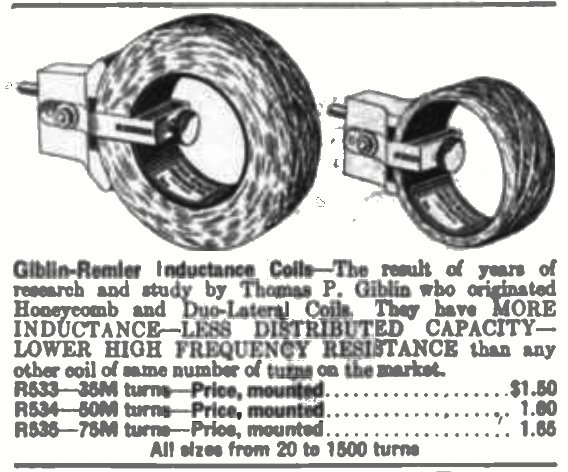
Radio, September 1922
|
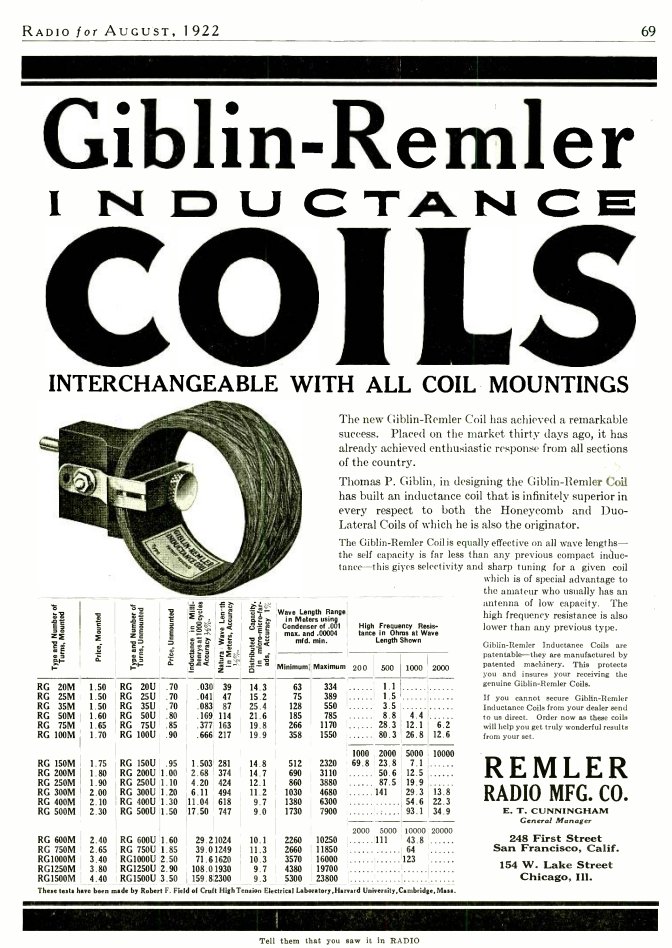
Click to enlarge
Radio, August 1922
|

Click to enlarge
Radio News, January 1923
|

Click to enlarge
Radio, February 1923
|

Click to enlarge
Radio Progress, July 1st, 1924
|

Click to enlarge
Radio Progress
March 15, 1924
|
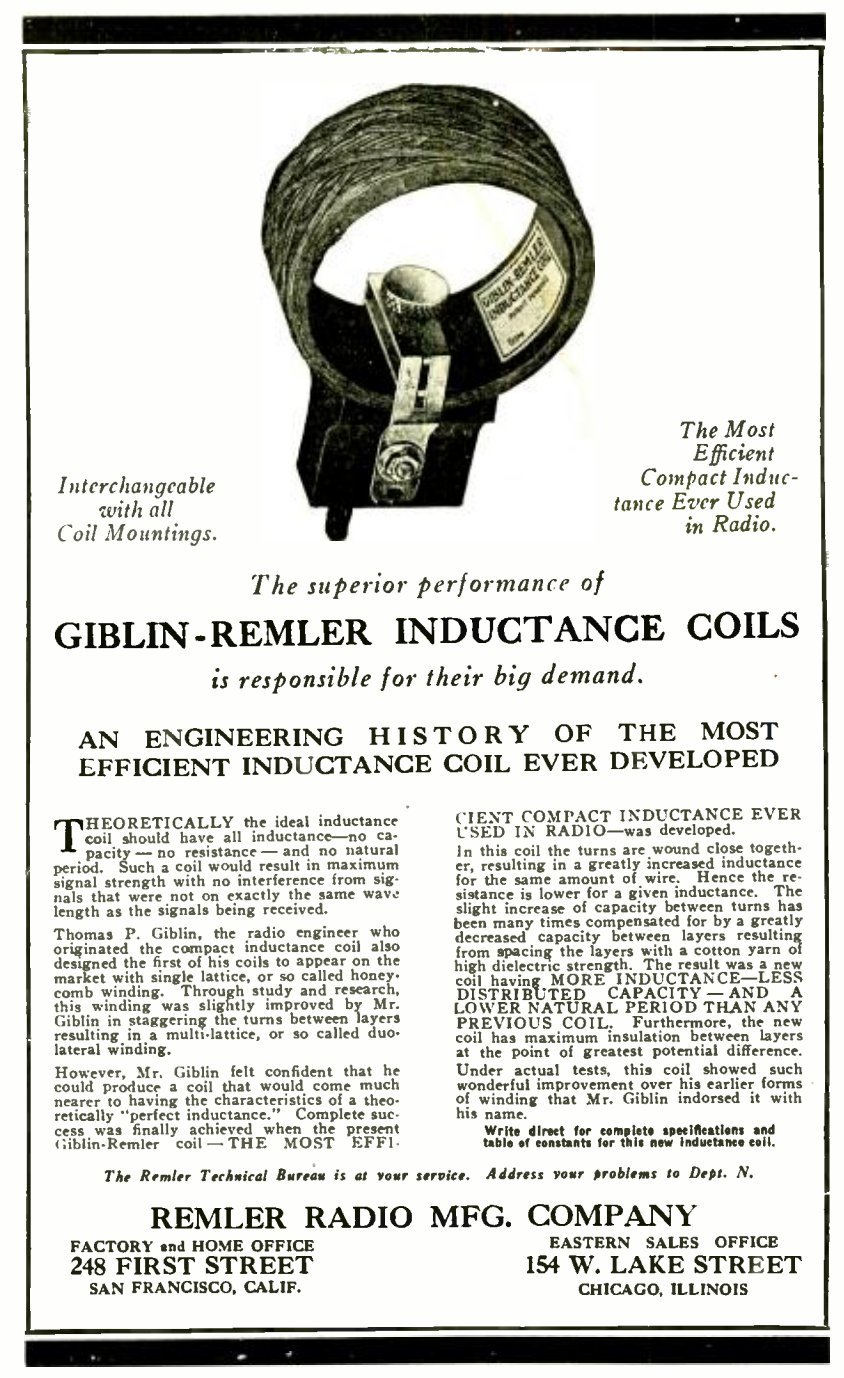
Click to enlarge
Radio News, February 1923
|
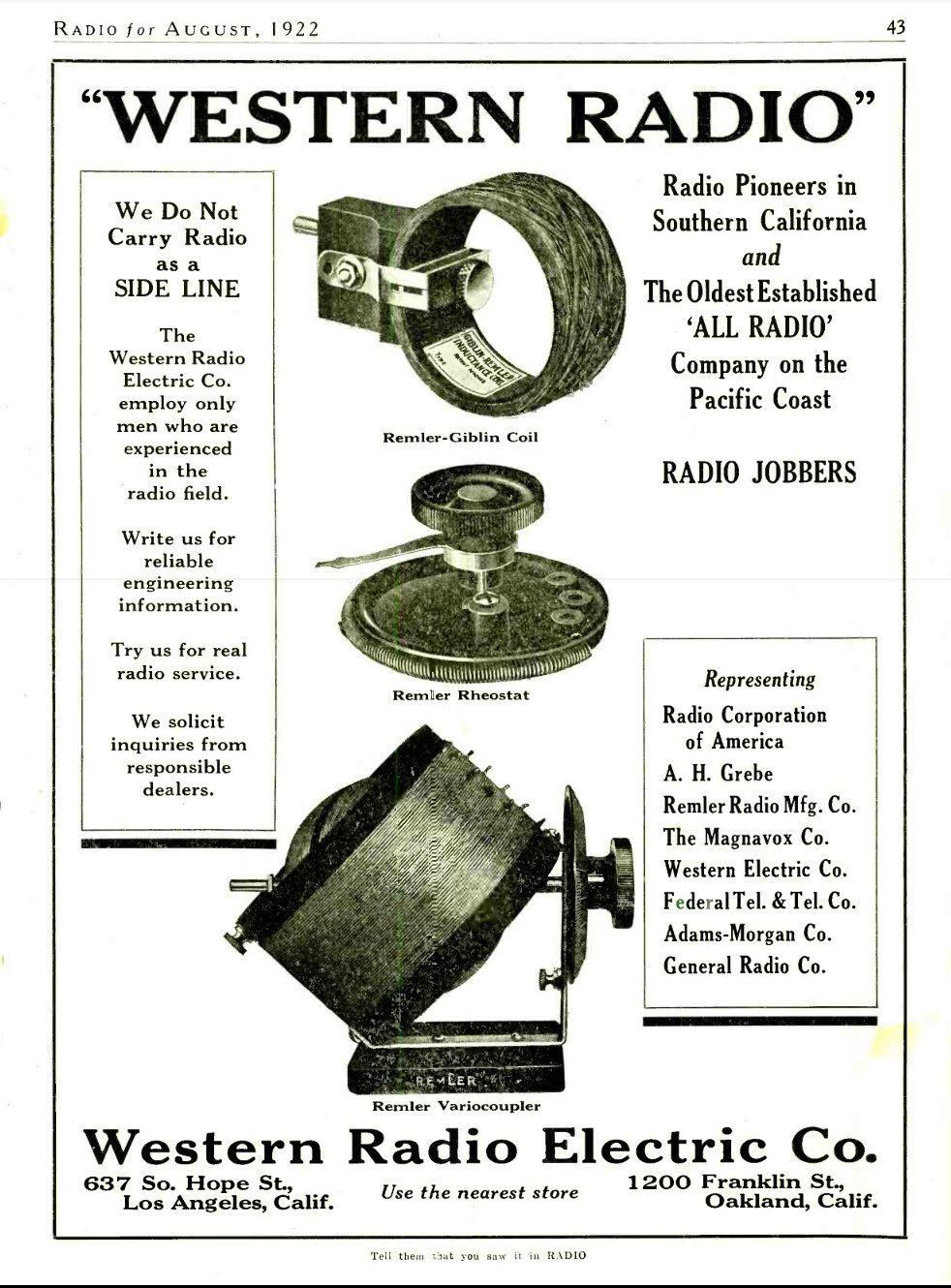
Click to enlarge
Radio, August 1922
|

Click to enlarge
Radio June 1923
|

Click to enlarge
Radio News, January 1923
|

Click to enlarge
Pawtucket Times
October 29, 1929
|
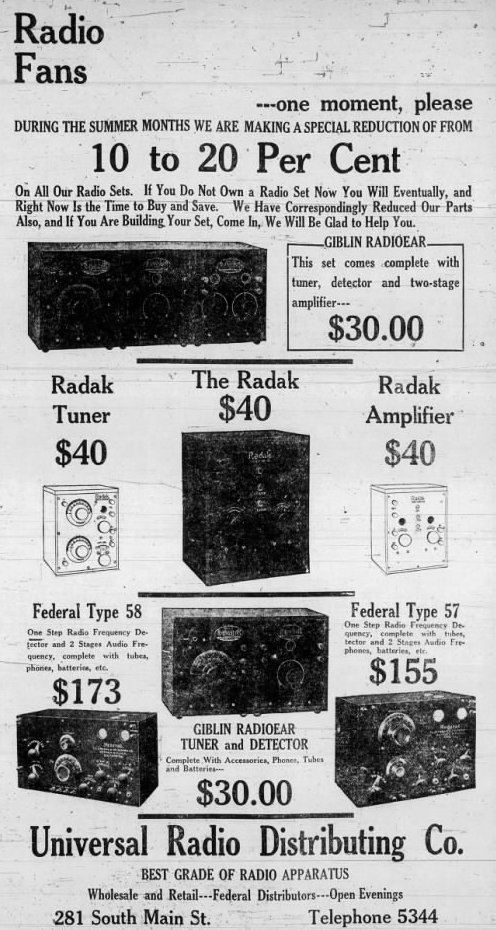
The Evening Herald
July 30, 1923
|

Pawtucklet Times October 4, 1929
|
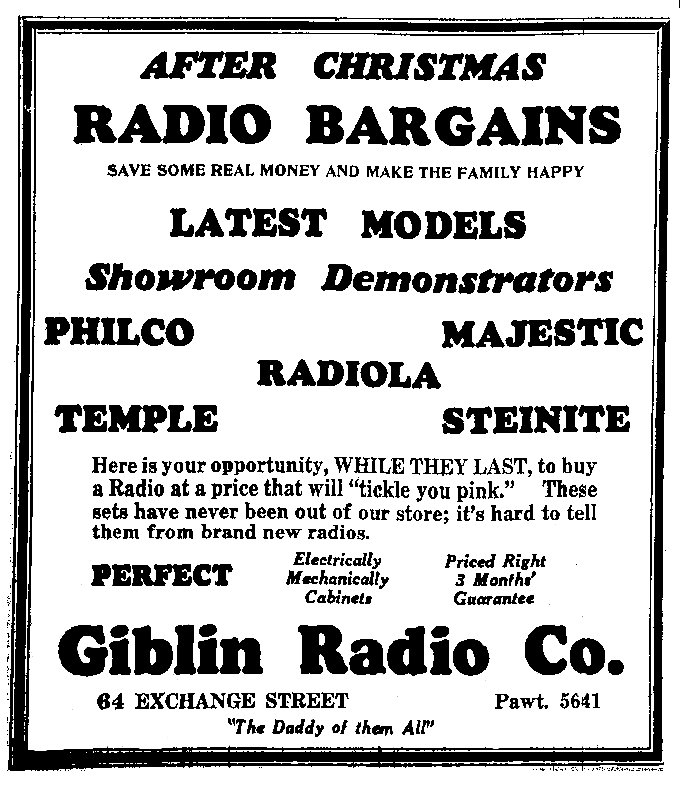
Pawtucket Times December 26, 1929
|
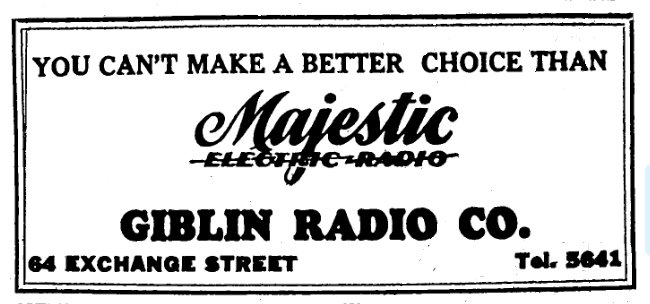
Pawtucket Times April 18, 1929
|

Click to enlarge
WWII Draft Card
|

